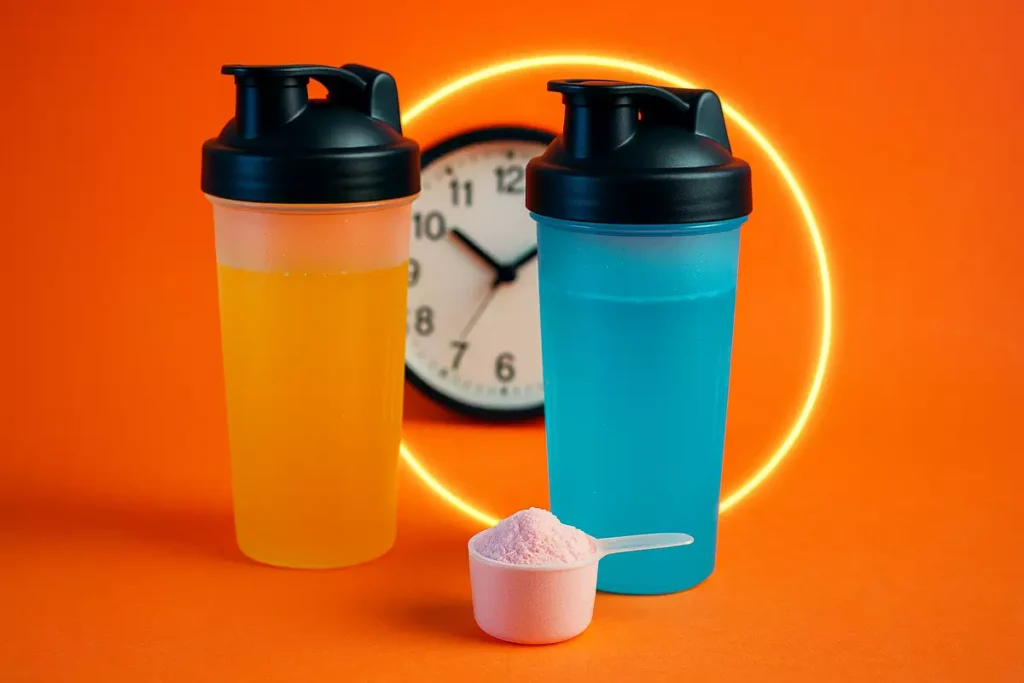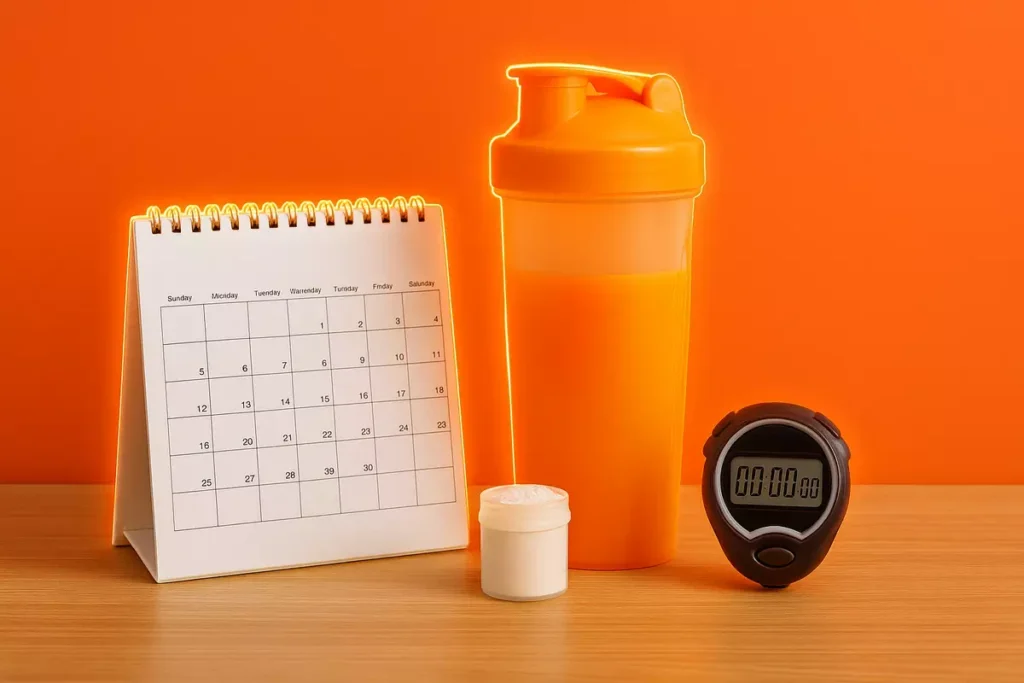Ever wondered if you can take BCAAs multiple times a day without harming your progress?
As a fitness trainer with over a decade of experience, I’ve tested this approach myself and coached many athletes through it.
Here’s the truth: taking BCAAs more than once daily can boost recovery and protect muscle mass—but only if you do it the right way.
Table of contents
Is It Safe to Take BCAAs Multiple Times a Day?
Yes, you can take BCAAs multiple times a day, and for many athletes, this approach can support better recovery and performance.
From my decade of bodybuilding experience and six years of coaching, I’ve personally used BCAAs multiple times daily during intense cutting phases or when training twice a day.
This strategy helped me maintain lean muscle mass, reduce soreness, and recover faster.
However, going overboard doesn’t speed up muscle growth. When I tried four servings a day during a strict diet phase, I felt bloated and noticed no added benefits.
In my experience, two well-timed servings are enough for most lifters, while advanced athletes might occasionally use a third serving during extended training sessions.
How BCAAs Work in Your Body

Branched-Chain Amino Acids (leucine, isoleucine, valine) are essential amino acids that directly stimulate muscle protein synthesis—the process of building and repairing muscle fibers.
Unlike other amino acids, BCAAs can be used directly by muscles as an energy source during training. This means when you’re lifting heavy or doing endurance workouts, your body taps into BCAAs to prevent muscle breakdown and fight fatigue.
Science also shows that leucine acts as a trigger for muscle growth by activating the mTOR pathway, which signals your muscles to repair and grow stronger.
If you want to understand more about how BCAAs help prevent muscle breakdown, check out this BCAA muscle breakdown guide.
Recommended Daily Dosage and Timing
Research and practical experience both suggest 10–20 grams of BCAAs per day, split into one or two servings.
- Beginners: One 5–10g serving around workouts is enough.
- Advanced athletes or double-session training: Two servings (morning/evening or pre-/intra-workout) help with recovery.
During my competition prep, I typically took:
- Serving 1: 30 minutes before training
- Serving 2: Immediately after training or during extended cardio sessions
When I once tried four servings a day, the result was diminishing returns—no extra muscle retention but more stomach discomfort.
If you’re curious about the best BCAA ratio for effectiveness, you can read more here: BCAA ratio 2:1:1 vs 4:1:1.
Benefits of Splitting BCAA Intake

Taking BCAAs multiple times daily can provide:
- Sustained amino acid availability to prevent catabolism (muscle loss)
- Improved workout endurance during long or double training sessions
- Reduced soreness and faster recovery between sessions
- Support during fasted workouts where you have no food in your system
For example, Lucas, a CrossFit athlete I coached from Germany, was training twice daily in preparation for a competition.
By splitting BCAAs into morning and evening servings, he avoided feeling depleted and maintained his strength despite high training volume.
For athletes aiming to bulk while minimizing muscle loss, here’s a guide on the best BCAAs for bulking.
Potential Side Effects of Overuse
While BCAAs are generally safe, taking too much can lead to:
- Stomach bloating or discomfort
- Potential amino acid imbalance if total protein intake is already high
- Wasted money without added performance benefits
Personally, I experienced mild bloating and sluggish digestion when I consumed over 20g spread across four servings.
Cutting back to two servings (10–15g total) solved the issue and still delivered all the recovery benefits.
Best Practices for Athletes and Gym-Goers

Based on years of training and coaching:
- Pre-workout: Gives an energy boost and protects muscles during intense lifting
- Intra-workout: Helps during long sessions or endurance training
- Post-workout: Useful if you can’t have a protein shake or meal right away
- Fasted training: Prevents muscle breakdown while keeping you in a fasted state
Daniel, a Canadian bodybuilder client of mine, combined one serving during his fasted morning cardio with another during evening lifting sessions.
This setup helped him stay lean and strong without overloading his system.
If you’re deciding between different forms, here’s a useful comparison of BCAA powder vs capsules, as well as flavored vs unflavored BCAAs.
Personal Experiences and Real-World Examples
Throughout my coaching career, I’ve seen different responses to BCAA frequency:
- Emma from Australia: A beginner who only needed one serving pre-workout and saw great strength gains without additional servings.
- Sofia from Spain: Preparing for a fitness photoshoot while in a calorie deficit. She used morning and late-night servings to protect muscle during high cardio days and reported less fatigue.
- Lucas from Germany: Competitive CrossFit athlete with two daily sessions. Splitting BCAAs helped sustain performance without overtraining.
For a detailed look at how BCAAs help maintain muscle during cutting, check out this muscle preservation guide.
Finding Your Optimal BCAA Schedule

Yes, it’s safe to take BCAAs multiple times a day, and in certain situations, it’s beneficial.
From my personal journey and coaching experience:
- Two servings a day works best for most lifters and athletes.
- Beginners often do fine with just one.
- Advanced athletes or those training fasted may benefit from a split dose, but more than three servings rarely adds value.
If you’re also considering other supplements, you might want to read this comparison of BCAA vs creatine for strength and size.
Ultimately, listen to your body, avoid excessive dosing, and remember that BCAAs are only a tool.
Proper nutrition, consistent training, and good recovery habits are the real keys to building strength and muscle.



Leave a Reply